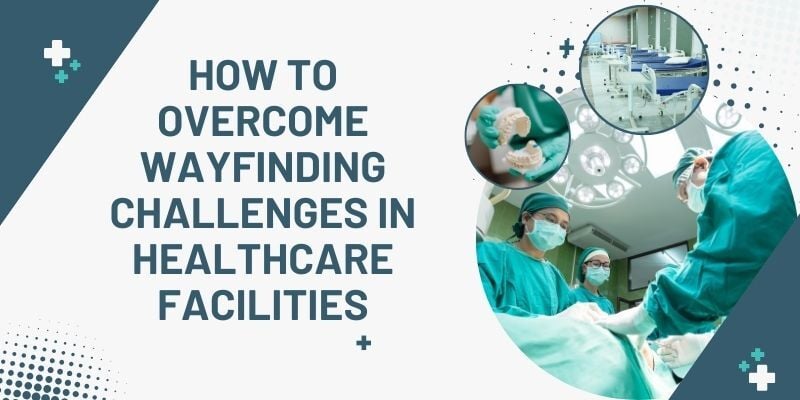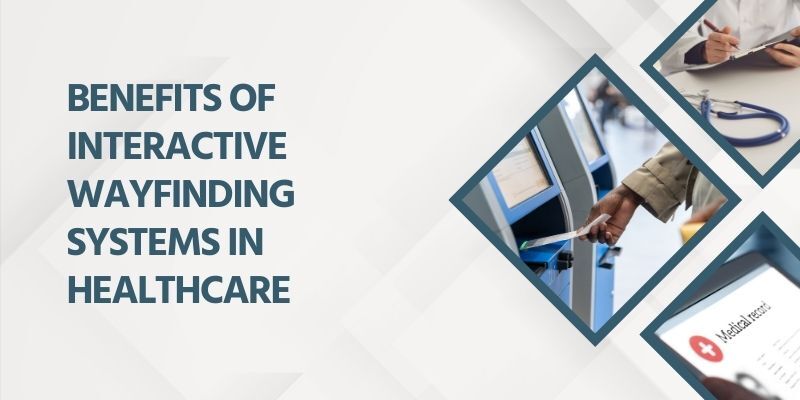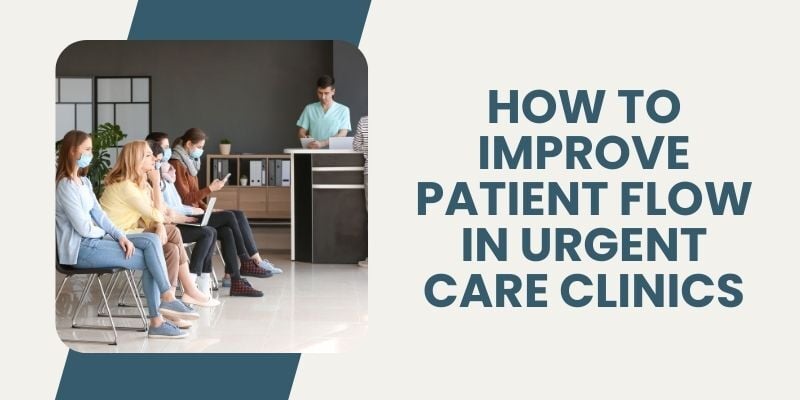How to improve patient experience in healthcare is a pivotal goal for any healthcare establishment. It involves ensuring that patients feel at ease and well-supported throughout their entire journey within the healthcare system.
This article focuses on providing guidance to healthcare professionals on achieving improving the overall patient experience.
A crucial aspect of this endeavor is understanding the ‘patient journey.’ This term refers to examining all the stages a patient goes through, understanding their feelings, and recognizing the information they require along the way.
With this knowledge, medical practitioners can implement measures to make the experience smoother and more pleasant for the patient.
We will now explore straightforward methods healthcare professionals can employ to elevate patient experience. Think of it as an extra level of care and attention to ensure the patient feels comfortable and well looked after throughout their healthcare journey.
Why Improving Patient Experience is Important
Improving patient experience is crucial for healthcare providers to deliver high-quality, patient-centered care. A recent survey found that 76% of Americans have not had a positive patient experience in the past three months, while 60% reported an outright negative experience. This highlights the significant room for improvement in ensuring patients consistently receive satisfactory care.
Enhancing patient experience not only benefits patients but also healthcare organizations. Studies show that hospitals with high patient satisfaction scores have higher profitability, as satisfied patients are more likely to return for care and recommend the provider to others.
Additionally, positive patient experiences are associated with better health outcomes, lower medical malpractice risk, and greater employee satisfaction. By prioritizing patient experience, healthcare providers can improve clinical processes, increase adherence to treatment plans, and achieve better health outcomes for their patients.
15 Key Strategies to Improve Patient Experience

Beyond clinical expertise, the patient’s experience plays a pivotal role in healthcare. Let us explore ten proven strategies that can make a meaningful difference in how patients perceive and engage with their healthcare providers and enhance patient experience.
- Streamlining Administrative Processes
- Implementing Technology Solutions
- Feedback And Continuous Improvement
- Innovative Patient Engagement Tools
- Implementing Efficient Queue Management Systems to Minimize Wait Times
- WhatsApp Appointment Reminders
- Cultural Sensitivity and Diversity Training
- Enhanced Patient Education
- Enhanced Facility Amenities
- Follow-Up And Post-Visit Care
- Telemedicine and Virtual Care
- Efficient Scheduling and Staffing
- Flexible Appointment Scheduling
- Implementing Patient-Centered Design Thinking
- Utilizing Predictive Analytics
1. Streamlining Administrative Processes
A survey reveals that 66% of participants feel healthcare providers appear more hurried than in the past, while 30% have experienced a rushed appointment. So, lack of time and attention have made patients often feel that their concerns are not adequately heard by their healthcare providers.
Efficient administrative processes are a cornerstone of enhancing patient satisfaction. Healthcare providers can dedicate more time to patient care by minimizing paperwork and optimizing workflows.
This reduces waiting times and improves overall queue management, ensuring patients receive timely attention and care.
2. Implementing Technology Solutions
Embracing technology is vital to elevating patient satisfaction. Integrated systems for appointment scheduling, electronic health records, and telemedicine are some of the ways to improve patient experience.
These solutions enhance convenience for patients and streamline operations, leading to a better patient queue management system and, ultimately, higher patient satisfaction.
3. Feedback and Continuous Improvement
Listening to patient feedback is crucial for sustained improvement in healthcare delivery. Regular assessments of patient experiences enable providers to pinpoint areas for enhancement.
When integrated into practice, this feedback loop ensures that overall patient satisfaction is constantly refined, ultimately leading to a higher standard of care.
4. Innovative Patient Engagement Tools
In today’s healthcare landscape, employing cutting-edge patient engagement technology is critical for improving the patient experience in hospitals.
These tools facilitate seamless communication, enable self-service options, and empower patients to take an active role in their own healthcare journey.
By embracing these innovations, hospitals can foster a more personalized and interactive approach to care, ultimately leading to enhanced patient satisfaction and outcomes.
5. Implementing Efficient Queue Management Systems to Minimize Wait Times
A critical aspect of how to improve patient experience in hospitals revolves around implementing efficient patient flow management systems. By leveraging technology and streamlined processes, hospitals can significantly reduce wait times.
This ensures that patients receive timely care and reflects a commitment to respecting their time and well-being. The result is a more positive and efficient healthcare encounter, contributing to an overall improved patient experience.
6.WhatsApp Appointment Reminders
Utilizing WhatsApp for appointment reminders is a simple yet powerful strategy for improving the hospital patient experience. This familiar and widely-used platform provides a convenient and direct communication channel.
Hospitals can help patients stay informed and organized by sending timely reminders, reducing no-shows, and ensuring a smoother healthcare journey. This approach reflects a commitment to patient-centric care, ultimately enhancing the overall hospital experience.
7. Cultural Sensitivity and Diversity Training
Incorporating cultural sensitivity and diversity training into healthcare practices is integral to fostering patient experience ideas that resonate with a diverse population.
Understanding and respecting patients’ unique cultural backgrounds, beliefs, and preferences is fundamental to providing inclusive care.
This training equips healthcare providers with the knowledge and skills to communicate effectively, address cultural nuances, and tailor care plans accordingly.
By embracing cultural sensitivity, healthcare institutions can implement powerful strategies to improve patient satisfaction.
This inclusive approach enhances trust and rapport between providers and patients and leads to more positive healthcare outcomes and a more enriched patient experience overall.
8. Enhanced Patient Education
Integrating digital signage into healthcare spaces is a dynamic approach to improving patient care through enhanced education.
These interactive displays offer a visually engaging platform to convey crucial medical information, treatment options, and wellness tips.
Apart from this, it encompasses informative pamphlets, multimedia resources, and one-on-one consultations.
These diverse tools cater to different learning styles, ensuring patients grasp their conditions comprehensively. Empowered with this knowledge, patients become active participants in their healthcare journey, resulting in better outcomes.
By leveraging these tools and technology, healthcare providers also empower patients with valuable knowledge, fostering a deeper understanding of their conditions and treatment plans.
This not only enhances patient engagement but also leads to more informed decision-making.
9. Enhanced Facility Amenities
As part of patient experience initiatives, upgrading facility amenities proves crucial. Modern healthcare institutions understand the importance of creating spaces that foster comfort and well-being.
Every detail contributes to a welcoming atmosphere, from calming aesthetics to cozy waiting areas.
Cutting-edge amenities like relaxation zones, complimentary refreshments, and convenient charging stations cater to diverse patient needs. Furthermore, offering Wi-Fi, entertainment options, and dedicated play areas for children further enhances the overall experience.
These considerate amenities improve the physical environment and show dedication to comprehensive patient-centered care.
By prioritizing comfort and convenience, healthcare providers demonstrate genuine concern for the well-being and satisfaction of their patients.
This, in turn, leads to a more positive and memorable healthcare experience, underscoring the impact of better patient experience initiatives on the quality of care provided.
10. Follow-up and Post-Visit Care
An often overlooked yet vital aspect of patient experience improvement is robust follow-up and post-visit care. It encompasses timely communication, monitoring of progress, and addressing any concerns that may arise after a patient’s initial visit.
This proactive approach reassures patients and demonstrates a commitment to their ongoing well-being.
By providing thorough post-visit care, healthcare providers strengthen trust and build lasting relationships with their patients, ultimately leading to a more positive and satisfying healthcare journey.
This comprehensive care continuum reflects a dedication to ensuring patients feel supported and valued throughout their healthcare experience.
11. Telemedicine and Virtual Care
Telemedicine and virtual care allow patients to get medical help without going to a doctor’s office. Patients can use their computers or phones to talk to doctors through video calls. This is helpful, especially for people far from a clinic or hospital.
With telemedicine, patients can get advice, check-ups, and even some treatments from the comfort of their homes. Virtual care also includes online portals where patients can see their test results, schedule appointments, and message their doctors.
Telemedicine makes healthcare more convenient and accessible, making it easier for patients to stay healthy.
12. Efficient Scheduling and Staffing
Efficient scheduling and staffing in healthcare means ensuring the correct number of doctors, nurses, and other staff are available to help patients at the correct times.
This helps reduce waiting times and ensures that all patients get the care they need quickly. One way to do this is by using special software that helps plan schedules.
This software looks at the number of patients who usually come in and helps decide how many staff members are needed daily. By doing this, hospitals and clinics can avoid having too many or too few staff on duty, which helps everyone work more smoothly and keeps patients happy.
13. Flexible Appointment Scheduling
Flexible appointment scheduling means giving patients more choices about when they can see their doctors. This helps patients find appointment times that fit their busy lives. For example, some clinics offer evening or weekend appointments.
Others might let patients book or change appointments online, which is very convenient. Patients with more scheduling options are more likely to keep their appointments and get the care they need.
This flexibility also helps reduce the number of missed appointments, making the healthcare system work better for everyone.
14. Implementing Patient-Centered Design Thinking
Implementing patient-centered design thinking in healthcare means creating services and spaces focusing on patients’ needs and wants. This approach starts by listening to patients and understanding their experiences.
Then, healthcare providers use this information to design better processes and environments. For example, a waiting room might be redesigned to be more comfortable and less stressful. Or, new systems might be implemented to make it easier for patients to find information and get help.
By focusing on the patient’s perspective, healthcare providers can create a more positive and practical experience for everyone.
15. Utilizing Predictive Analytics
Utilizing predictive analytics in healthcare means using data to predict what might happen in the future. This helps doctors and hospitals make better decisions. For example, by looking at past data, predictive analytics can help identify which patients are at risk of getting sick.
This allows doctors to take action early to prevent illnesses. Predictive analytics can also help with planning, like knowing when more patients will need care so the hospital can be ready.
By using these intelligent tools, healthcare providers can improve patient care and make the healthcare system work more efficiently.
Is Patient Experience the Same as Patient Satisfaction:
Patient experience is often confused with patient satisfaction as both terms are closely related but differ. Each has its importance and catering to both is necessary in recent times to improve overall customer experience.
Patient Experience:
Patient experience is the overall impression he gets of all the interactions he had with the healthcare system. This includes every single thing, such as how he was treated by the doctors and nurses and the quality of care he received. It is all about the overall patient’s journey, specifically looking at factors such as how clear was the information shared and how easy was access to the healthcare services.
Patient Satisfaction:
Whereas, patient satisfaction is more of a quantitative measure of patient expectations. It usually includes survey forms regarding the treatment the patient received or how was the visit by the doctor, whether it was satisfactory or not. This feedback helps healthcare providers to know which specific instances are working well and which need improvement.
FAQs on How To Improve Patient Care Experience

What Are Some Common Challenges in Delivering a Positive Patient Experience?
Balancing a high patient volume with personalized care is a common challenge. Providers must efficiently manage their time to ensure each patient receives quality attention.
Additionally, managing wait times through effective scheduling and queue management is crucial for a positive experience.
How Can Healthcare Organizations Enhance Doctor-Patient Communication?
Active listening and empathy are vital components of effective doctor-patient communication. Encouraging doctors to understand and address patients’ concerns truly builds trust.
Using clear, jargon-free language ensures that medical information is easily understood, empowering patients to make informed decisions.
What Is the Role of Technology in Improving Patient Experience?
Technology streamlines healthcare tasks, freeing up providers for patient care. Electronic health records and patient portals boost transparency and patient access to medical information. Telemedicine expands accessibility, enhancing the overall patient experience.
Final Words
In conclusion, understanding how to improve patient experience is at the core of delivering quality healthcare. We’ve explored a range of strategies, from utilizing technology to enhancing communication and cultural sensitivity.
These steps aim to create an environment where patients feel valued and well-cared for. Healthcare providers can build trust and confidence by prioritizing patient needs and comfort.
This patient-centered approach leads to better outcomes and strengthens the patient-provider relationship.
Embracing these practices is a significant leap toward a more compassionate and effective healthcare system where every patient feels heard, respected, and supported in their journey to better health.
It’s not just about treating a condition; it’s about ensuring that each patient’s experience is positive, empowering, and tailored to their unique needs. This is the essence of delivering exceptional healthcare.
BOOK A FREE DEMO





